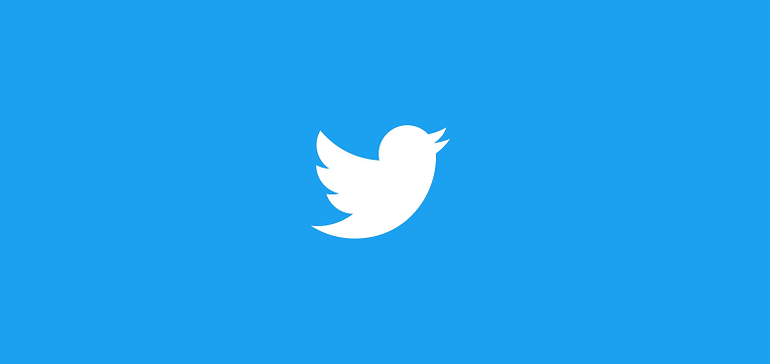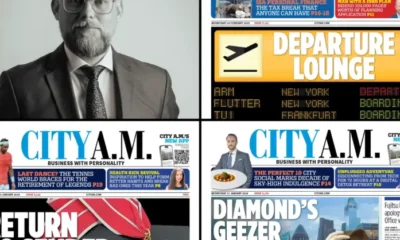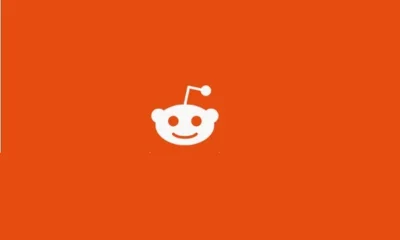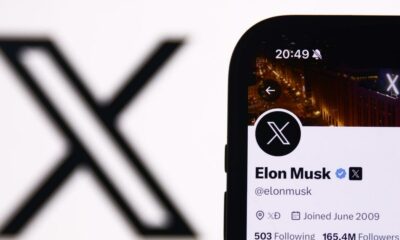SOCIAL
Twitter Sees First Win in Legal Case Against Elon Musk, as Musk Looks to Exit Twitter Takeover Deal

This probably doesn’t bode well for Elon Musk’s chances at wriggling out of his $44 billion Twitter takeover bid.
Today, Delaware’s Court of Chancery has ruled in Twitter’s favor for an expedited trial in the Musk acquisition case, with Musk and Co. given just five days to present their argument as to why Musk should be allowed to pull out of the deal. The case has been scheduled for October.
The Chancellor reportedly only needed 10 minutes to come to a decision.
Musk’s legal team had sought to extend the length of the trial, arguing that it needs more time to review the data required, and that Twitter is seeking to obfuscate its figures on fake and spam accounts by expediting the timeline, which Musk’s team says is the key reason for pulling out of the deal.
But in another potential blow for Musk’s chances, Chancellor Kathaleen McCormick said that addressing this element is not necessary, since “nothing in the merger agreement turns on that question.”
As reported by CNBC, Twitter’s lawyers argued that a quick trial is necessary ‘in order stop the ongoing harm Twitter has experienced from the uncertainty of the deal’s closure and alleged disparagement by Musk’.
Musk has been very vocal, and very public, in his criticism of the company, and its claim that only 5% of its active accounts are spam and/or bots. Musk has also criticized Twitter’s leadership, its prospects, its board – basically, Musk has been open in his disdain for the company, almost from the beginning of his takeover push.
Twitter says that Musk’s actions have violated the non-disparagement clause in the takeover agreement, and it seems inevitable that Twitter will eventually also argue that Musk has caused significant monetary harm to the company due to his attacks, which will be difficult for Twitter to fully recover from, whether Musk is forced to pay up or not.
Which is another key consideration. Right now, Twitter is almost in a lose-lose scenario – either it ends up in a worse market position, and it has to pick up the pieces as Musk exits the deal, or it winds up being owned by someone who clearly no longer wants it, which is an uncertain outcome in itself.
And if Musk is forced to buy it, what then? Will Musk be able to put aside the bitterness of the takeover dispute to then build Twitter into a significant, valuable business?
It’s pretty much a mess all around – and Twitter employees now have to deal with at least another three months of this, as they await the legal trial.
The human impacts, in this sense, are significant. And while speculation swirls around Musk’s real motivation for his decision to exit the bid, the bottom line increasingly seems to be that Musk will have to pay, with any attempts to either reduce the bid price, or side-step the contract terms, likely negated by Musk’s own public statements and comments.
Which Musk seems to believe will have little bearing – and for good reason, given that Musk has avoided responsibility for such in the past.
Back in 2019, Musk was sued for defamation after he leveled unfounded claims, via tweet, that a member of a cave rescue team working to save a group of trapped youngsters in Thailand was a ‘pedo guy’.
Musk’s legal team argued that, as Musk did not mention the victim by name within the offending tweet, that it was unclear whom exactly Musk was referring to, which negates the defamation claim. The court ultimately agreed, and that case seems to have emboldened Musk to say whatever he likes via tweet, knowing that he can probably find legal loopholes to disown such opinions in retrospect, by being careful in who he does and doesn’t refer to directly in his comments.
You can expect to see Musk’s legal team refer to this again in the upcoming Twitter trial, which likely explains by Musk’s tweets about the case remain fairly cryptic.
Either way, though, the outcome for Twitter is not good – while Twitter also knows that Musk is trying to extend the timeline for the trial, which could then complicate his financing for the deal, another potential out for the billionaire.
It’s a sad next stage for what once seemed to be a positive move for the app’s future, at least to some analysts and supporters. Many viewed Musk as a potential savior for the platform, with his genius to lead Twitter into a new phase of life.
Now, that seems like an afterthought. And when all the current board members and execs get paid as a result of the Musk deal, if it indeed does go through, what then?
Will Musk even be able to fix this, if he is forced to become Tweeter in chief?
SOCIAL
Snapchat Explores New Messaging Retention Feature: A Game-Changer or Risky Move?

In a recent announcement, Snapchat revealed a groundbreaking update that challenges its traditional design ethos. The platform is experimenting with an option that allows users to defy the 24-hour auto-delete rule, a feature synonymous with Snapchat’s ephemeral messaging model.
The proposed change aims to introduce a “Never delete” option in messaging retention settings, aligning Snapchat more closely with conventional messaging apps. While this move may blur Snapchat’s distinctive selling point, Snap appears convinced of its necessity.
According to Snap, the decision stems from user feedback and a commitment to innovation based on user needs. The company aims to provide greater flexibility and control over conversations, catering to the preferences of its community.
Currently undergoing trials in select markets, the new feature empowers users to adjust retention settings on a conversation-by-conversation basis. Flexibility remains paramount, with participants able to modify settings within chats and receive in-chat notifications to ensure transparency.
Snapchat underscores that the default auto-delete feature will persist, reinforcing its design philosophy centered on ephemerality. However, with the app gaining traction as a primary messaging platform, the option offers users a means to preserve longer chat histories.
The update marks a pivotal moment for Snapchat, renowned for its disappearing message premise, especially popular among younger demographics. Retaining this focus has been pivotal to Snapchat’s identity, but the shift suggests a broader strategy aimed at diversifying its user base.
This strategy may appeal particularly to older demographics, potentially extending Snapchat’s relevance as users age. By emulating features of conventional messaging platforms, Snapchat seeks to enhance its appeal and broaden its reach.
Yet, the introduction of message retention poses questions about Snapchat’s uniqueness. While addressing user demands, the risk of diluting Snapchat’s distinctiveness looms large.
As Snapchat ventures into uncharted territory, the outcome of this experiment remains uncertain. Will message retention propel Snapchat to new heights, or will it compromise the platform’s uniqueness?
Only time will tell.
SOCIAL
Catering to specific audience boosts your business, says accountant turned coach

While it is tempting to try to appeal to a broad audience, the founder of alcohol-free coaching service Just the Tonic, Sandra Parker, believes the best thing you can do for your business is focus on your niche. Here’s how she did just that.
When running a business, reaching out to as many clients as possible can be tempting. But it also risks making your marketing “too generic,” warns Sandra Parker, the founder of Just The Tonic Coaching.
“From the very start of my business, I knew exactly who I could help and who I couldn’t,” Parker told My Biggest Lessons.
Parker struggled with alcohol dependence as a young professional. Today, her business targets high-achieving individuals who face challenges similar to those she had early in her career.
“I understand their frustrations, I understand their fears, and I understand their coping mechanisms and the stories they’re telling themselves,” Parker said. “Because of that, I’m able to market very effectively, to speak in a language that they understand, and am able to reach them.”Â
“I believe that it’s really important that you know exactly who your customer or your client is, and you target them, and you resist the temptation to make your marketing too generic to try and reach everyone,” she explained.
“If you speak specifically to your target clients, you will reach them, and I believe that’s the way that you’re going to be more successful.
Watch the video for more of Sandra Parker’s biggest lessons.
SOCIAL
Instagram Tests Live-Stream Games to Enhance Engagement

Instagram’s testing out some new options to help spice up your live-streams in the app, with some live broadcasters now able to select a game that they can play with viewers in-stream.
As you can see in these example screens, posted by Ahmed Ghanem, some creators now have the option to play either “This or That”, a question and answer prompt that you can share with your viewers, or “Trivia”, to generate more engagement within your IG live-streams.
That could be a simple way to spark more conversation and interaction, which could then lead into further engagement opportunities from your live audience.
Meta’s been exploring more ways to make live-streaming a bigger consideration for IG creators, with a view to live-streams potentially catching on with more users.
That includes the gradual expansion of its “Stars” live-stream donation program, giving more creators in more regions a means to accept donations from live-stream viewers, while back in December, Instagram also added some new options to make it easier to go live using third-party tools via desktop PCs.
Live streaming has been a major shift in China, where shopping live-streams, in particular, have led to massive opportunities for streaming platforms. They haven’t caught on in the same way in Western regions, but as TikTok and YouTube look to push live-stream adoption, there is still a chance that they will become a much bigger element in future.
Which is why IG is also trying to stay in touch, and add more ways for its creators to engage via streams. Live-stream games is another element within this, which could make this a better community-building, and potentially sales-driving option.
We’ve asked Instagram for more information on this test, and we’ll update this post if/when we hear back.
-

 PPC5 days ago
PPC5 days ago19 Best SEO Tools in 2024 (For Every Use Case)
-
SEARCHENGINES7 days ago
Daily Search Forum Recap: April 17, 2024
-

 SEO7 days ago
SEO7 days agoAn In-Depth Guide And Best Practices For Mobile SEO
-
SEARCHENGINES6 days ago
Daily Search Forum Recap: April 18, 2024
-
SEARCHENGINES5 days ago
Daily Search Forum Recap: April 19, 2024
-

 MARKETING6 days ago
MARKETING6 days agoEcommerce evolution: Blurring the lines between B2B and B2C
-

 SEO6 days ago
SEO6 days ago2024 WordPress Vulnerability Report Shows Errors Sites Keep Making
-

 WORDPRESS6 days ago
WORDPRESS6 days ago10 Amazing WordPress Design Resouces – WordPress.com News













You must be logged in to post a comment Login